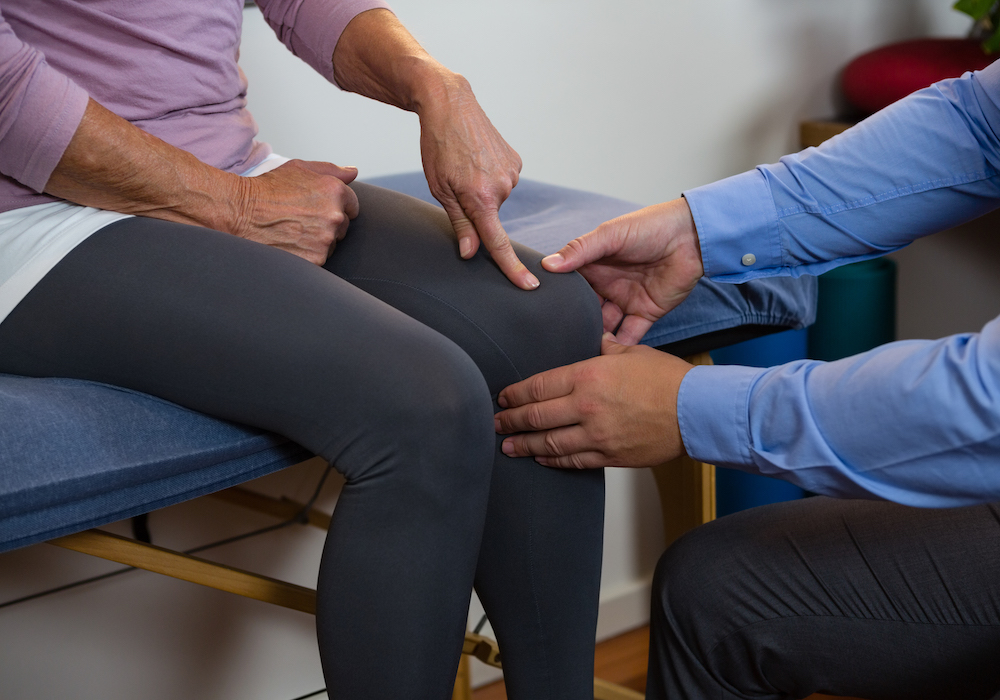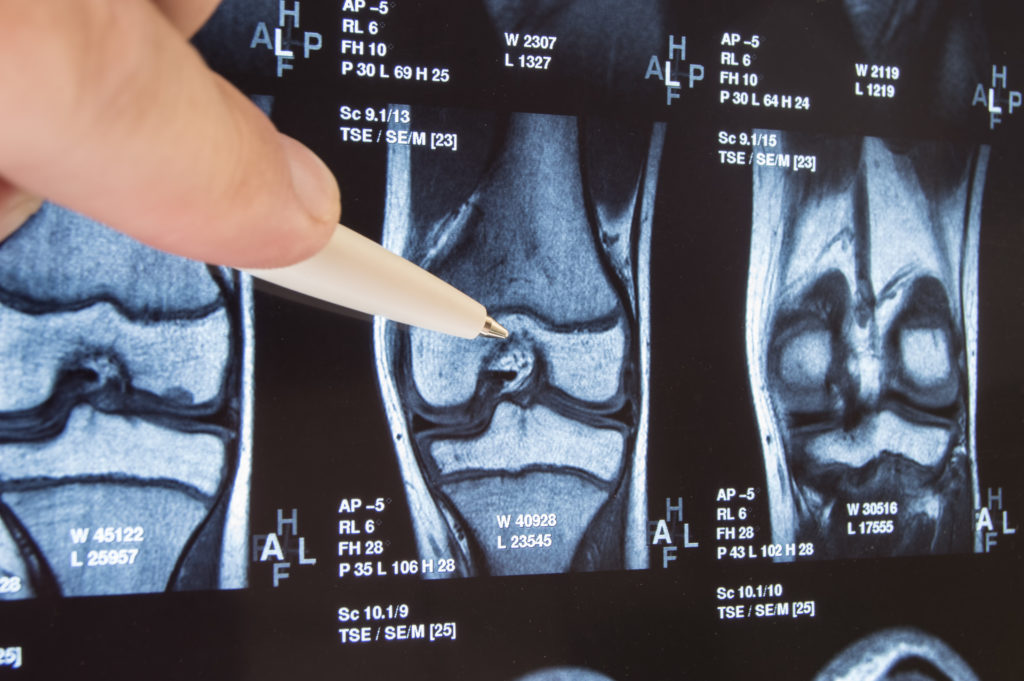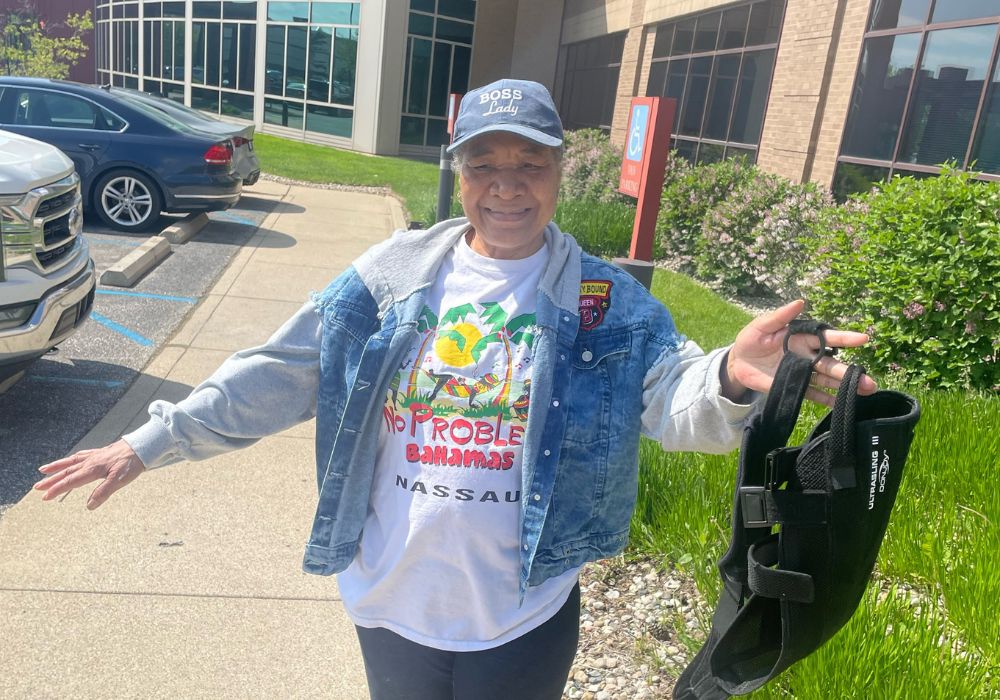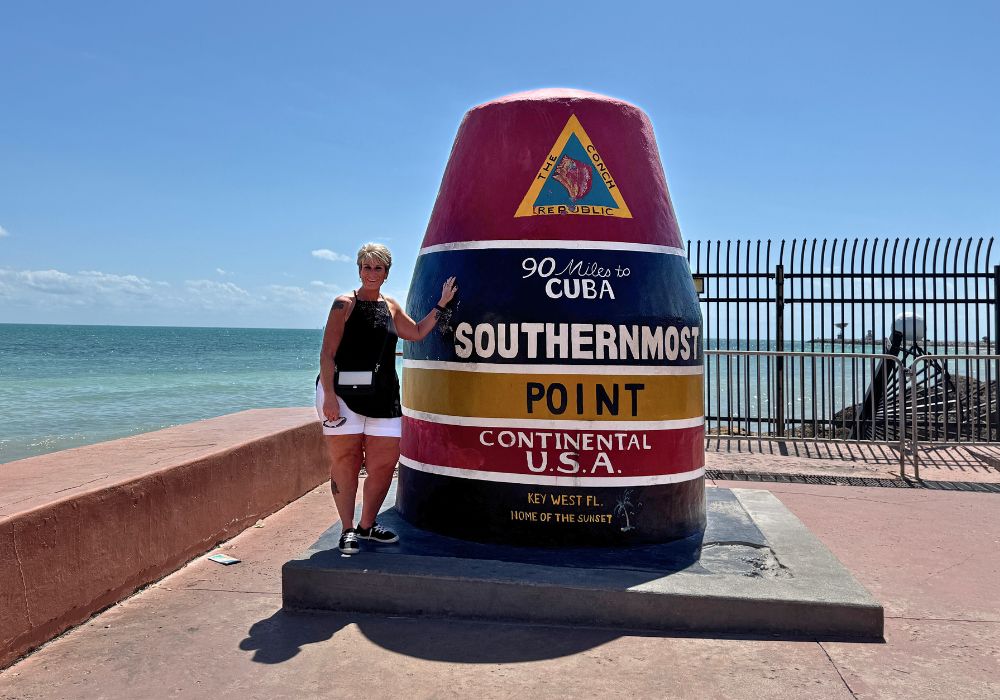A knee sprain is a common injury that occurs when one of your four major knee ligaments stretches too far or partially tears. This is often a sports-related injury.
Anatomy
The knee is made up of four major ligaments, which are strong rope-like tissues holding together the thigh bone (femur) and shin bone (tibia) at the knee.
The four ligaments are the anterior cruciate ligament (ACL), posterior cruciate ligament (PCL), medial collateral ligament (MCL) and lateral collateral ligament (LCL). Each of these ligaments work together to stabilize your knee joint.
The ACL and PCL form an “X” as they cross each other inside your knee and work together to control your knee’s back and forth motion.
The ACL is in the middle of your knee and is responsible for keeping the tibia from sliding in front of the femur. The PCL runs down the back of your knee and prevents the tibia from sliding behind the femur.
Your MCL is on the inside of your knee. This ligament makes sure your femur doesn’t swing too far outward. The LCL is across from the MCL on the outside of the knee and also controls the femur’s side to side movement, ensuring it doesn’t swing too far inward.
Types of knee sprains
Most knee sprains can be treated without surgery, but severe sprains may require surgical intervention. Below is a list of types of knee sprains.
- Grade 1 Sprains: The ligament is mildly damaged and slightly stretched but is still able to help keep the knee joint stable.
- Grade 2 Sprains: The ligament is stretched to the point where it becomes loose, often referred to as a partial tear.
- Grade 3 Sprains: Referred to as a complete tear of the ligament; the ligament has been split into two pieces, and the knee joint is unstable.
What are the causes of knee sprain injuries?
A knee sprain is a painful injury that can happen to anyone. Your ligaments stretch or tear the easiest when you suddenly pivot or turn your leg in an unnatural way. The ligament affected depends on the direction your leg is pulled. Knee sprains often happen during activities like sports, where direct force or a sudden movement occurs.
What does a sprained knee feel like?
The following are sprained knee symptoms:
- Pain around the affected area
- Swelling around the sprained section of the knee
- Knee instability, leading to your knee buckling under the pressure of your weight
- Bruising, moderate to severe, depending on the sprain
- A popping sound when the injury occurs
- Stiffness and decreased movement due to pain
- Limited to no range of motion
Depending on which ligament you injure, your symptoms could differ.
How to treat a sprained knee
To determine if you have a knee sprain, your physician will ask you for a complete medical history, have you describe your symptoms and how the knee injury occurred and conduct a physical examination. An X-ray or MRI may be necessary to confirm the diagnosis and determine if there are other problems.
The fastest way to heal a knee sprain is rest. Treatment will depend on your lifestyle. If you’re an athlete the treatment may be surgery, to get you back in the game. However, people whose lifestyles don’t include high impact activities often can go a route that avoids surgery such as physical therapy or resting the injury at home.
Sprained knee treatment options vary. In most cases, you won’t need surgery. An ACL tear is the most likely ligament to need surgery.
- Rest
- Ice
- Compression
- Elevation
- Brace
- Physical therapy knee sprain exercises
- Over the counter pain medication
If surgery is necessary, it will be done arthroscopically, which means there will be a few small incisions made and it will minimize your hospital visit and recovery time.
How long does a knee sprain take to heal?
Knee sprain recovery time varies based on the sprained knee ligament and how it is treated. The most important part of the healing process is getting you back to normal before resuming activities.
Rehabilitation will include a light to moderate physical therapy program, depending on your level of pain. This is necessary to improve joint stability, full range of motion and your knee strength. Recovery time is dependent on the ligament injured and the severity of the injury.
Learn more about having knee pain treated at OrthoIndy
Schedule an appointment
Your well-being is important to us. Click the button below or call us to schedule an appointment with one of our orthopedic specialists. If your injury or condition is recent, you can walk right into one of our OrthoIndy Urgent Care locations for immediate care. For rehabilitation and physical therapy, no referral is needed to see one of our physical therapists.





